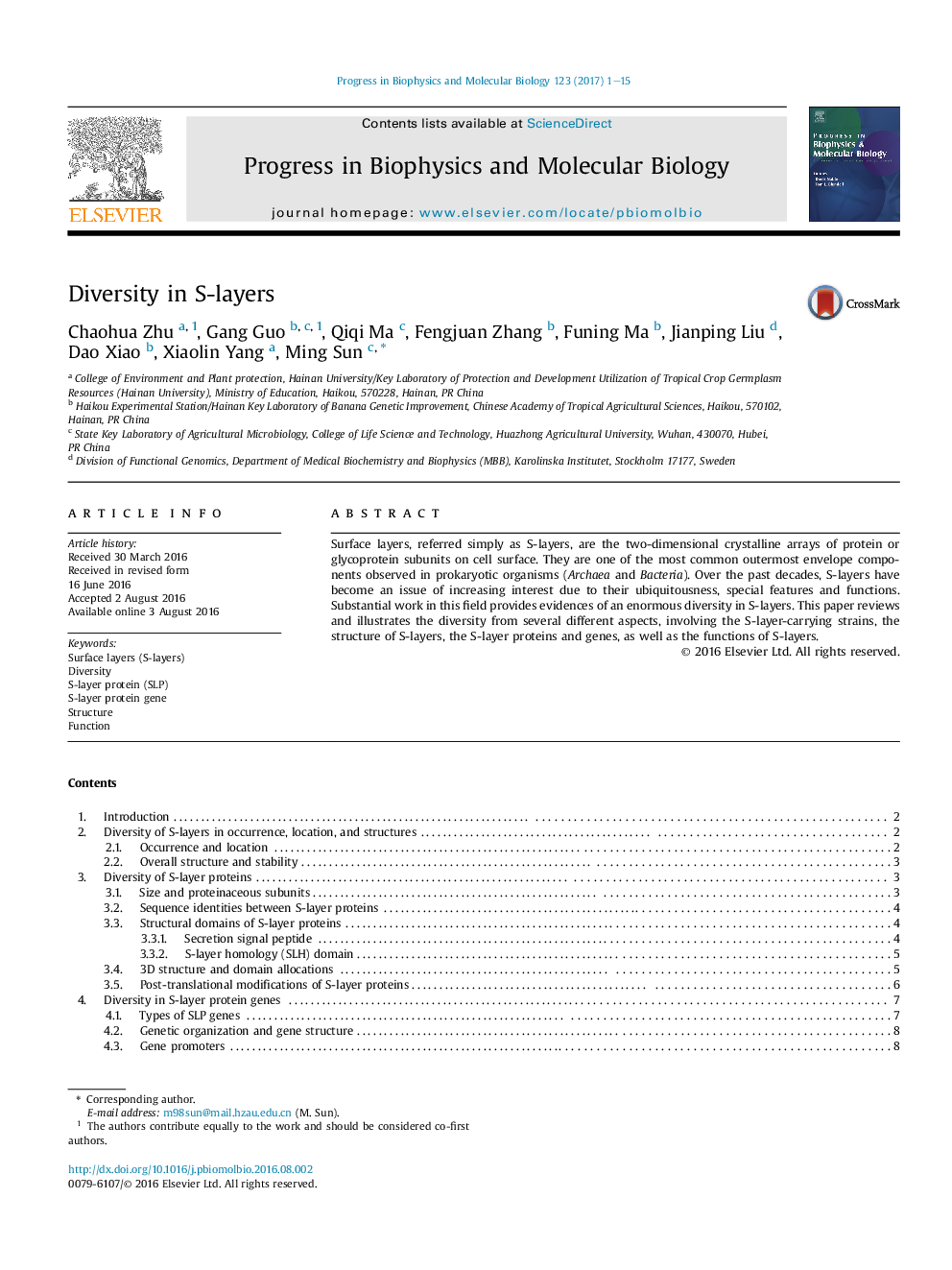| Article ID | Journal | Published Year | Pages | File Type |
|---|---|---|---|---|
| 5519928 | Progress in Biophysics and Molecular Biology | 2017 | 15 Pages |
Abstract
Surface layers, referred simply as S-layers, are the two-dimensional crystalline arrays of protein or glycoprotein subunits on cell surface. They are one of the most common outermost envelope components observed in prokaryotic organisms (Archaea and Bacteria). Over the past decades, S-layers have become an issue of increasing interest due to their ubiquitousness, special features and functions. Substantial work in this field provides evidences of an enormous diversity in S-layers. This paper reviews and illustrates the diversity from several different aspects, involving the S-layer-carrying strains, the structure of S-layers, the S-layer proteins and genes, as well as the functions of S-layers.
Related Topics
Life Sciences
Biochemistry, Genetics and Molecular Biology
Biophysics
Authors
Chaohua Zhu, Gang Guo, Qiqi Ma, Fengjuan Zhang, Funing Ma, Jianping Liu, Dao Xiao, Xiaolin Yang, Ming Sun,
